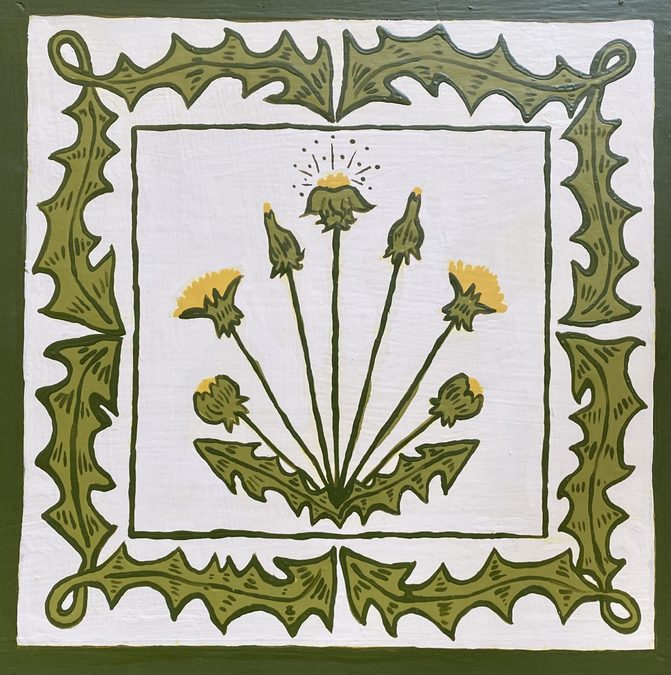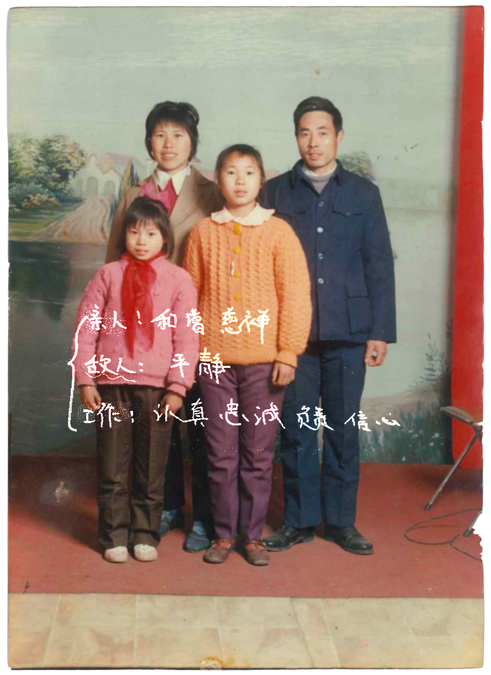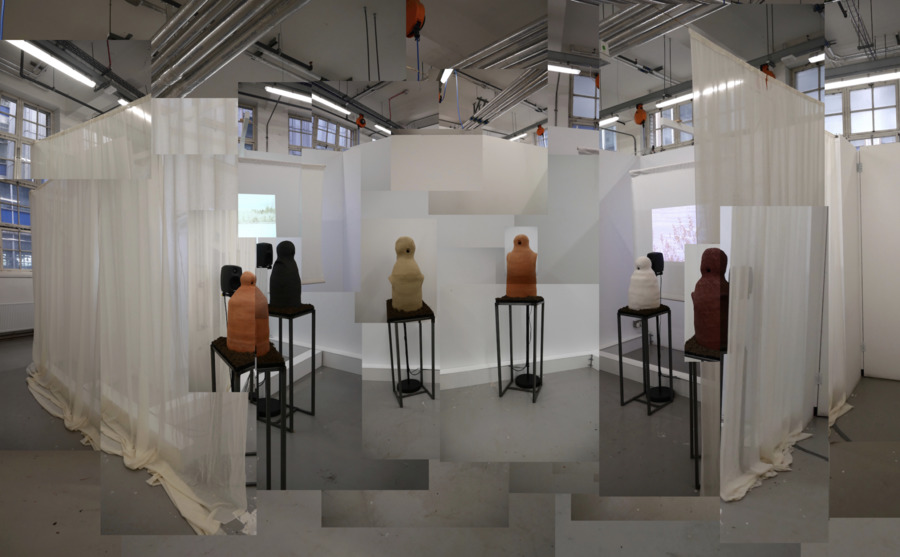Glasgow School of Art Degree Show 2024: The Review
The Glasgow School of Art's undergraduate degree show sees graduates invoking childhood memories, family lineages and concerns about our natural environments
This year, the Glasgow School of Art's School of Fine Art exhibits the works of approximately 120 students at the Stow Building, across three of its undergraduate departments: Sculpture & Environmental Art, Painting & Printmaking, and Fine Art Photography. Displayed across its five levels, this Degree Show is ambitious, with many of the students’ projects designed to offer immersive walk-in experiences— visibly achieved through large-scale installations and sensory components like video, sound, as well as scents. Some works recreate living spaces and preserve remnants of performances as part of the work and process, creating environments that encourage introspection and active physical engagement from the audience.
From the Sculpture & Environmental Art course, Robyn Bamford presents six figure-like ceramic sculptures, placed on high stools within a curtained space, inviting the audience into a meditative enclosure. Titled Water Flutes: An Elemental Motet, these water flute sculptures crafted from various coloured clays resound an eerie tune inspired by ancient sound and musical techniques. The audio was created by layering frequencies generated by these flutes immersed within various natural backdrops and bodies of water; a seemingly ritualistic process that is documented in the two accompanying videos. These flutes further emanate a moist, earthy scent that was made at A Library of Olfactive Material, Glasgow.
In another work exploring the environment, Ruby Caldwell-Hardie has crafted a hut-like structure in the form of a cabinet accessed by two steps. Inside this, the artist has placed a chair with a speaker playing music. Making use of raw materials such as cotton, paper, wood, and wax, the artist creates an inviting space that is softly illuminated by lights and handcrafted lamps, giving it a magical undertone. The process of creating this work using soft cotton and malleable wax, which contrasts with the stark structure of the hut itself, has allowed the artist a tactile and somatic exploration of the materials and the ability to respond to their intuitive process, generating an energy not just in its making, but subsequently also in the viewer.
From Fine Art Photography, Kaiying Qian explores themes of home and culture rooted in her Chinese heritage. Using photojournalism, archival photography and personal narratives, she delves into her memories of her grandmother’s house, family albums and other parallel histories. Reflecting on time, nostalgia, ageing and cultural communication within East Asian households, she addresses her frustration over irretrievable moments, as she comprehends the passage of time, and its ability to reduce everything to dust. Her two projects titled Glad You’re Doing Well and To the Dust, are organised within a space accessed through a beaded door curtain, featuring old picture frames containing her series of photographs, articles such as outdated calendars, and other domestic items reminiscent of her cultural background, including a book made of the fabric from her grandmother’s house.
In another work exploring similar themes, Ella Gunning reflects on her distant memories of home, culture, identity, and family, far removed from her current surroundings. Through soft monochromatic photographs and evocative stills, she explores a longing for familiar environments from her past, generating wistful feelings associated with lost time and distant memories. Her frames capture candid moments in time that tell a story of individuals, families, animals and landscapes which collectively create a sense of home and belonging. Through a sense of nostalgia, she tries to transport herself to her childhood, and wonders whether her photographic approach might also transport viewers back to their own childhoods.
From Painting & Printmaking, Quentin Borland uses their backgrounds in painting, printmaking, and textiles to create organic designs centered on the motif of the dandelion. In their project The Dandelion Room, they employ the organic and delicate motif of the dandelion and a natural palette of greens, yellows and creams to create a living room-like space. By arranging decorative furniture and other household articles, they design a compact, comfortable environment with the illustration of the dandelion featured throughout the space. Through this, they aim to recreate the qualities of nature indoors to represent not just an ecosystem, but also the emotions generated by the idea of a home and a domestic space.
Jungyoon Im, a South Korean artist, uses painterly strokes to create hazy visuals that explore themes of memory, dreams and repressed desires within liminal spaces. Her display Always be with you includes paintings that draw from a year's worth of daily dream journaling, and attempts to recreate the visuals, textures and colours that she recalls from these dreams. Displayed to capture the elusive nature of dreams itself, the works radiate from a focal point, spreading randomly across the walls. This display is accompanied by a zine or ‘Dream Diary’ that documents the process of journaling her dreams, which are further translated into drawings and subsequently transformed into paintings.
In parallel with the degree show displays, a section called FACSimile presented by the Fine Art Critical Studies department houses the dissertation works of final-year graduating students. Given its simultaneous display with the physical manifestations of the students' work, it is interesting to see how the integration of written research with practice-based courses emphasised the importance of critical thinking, ideas and academic study within the framework of artistic practices across the various disciplines.


